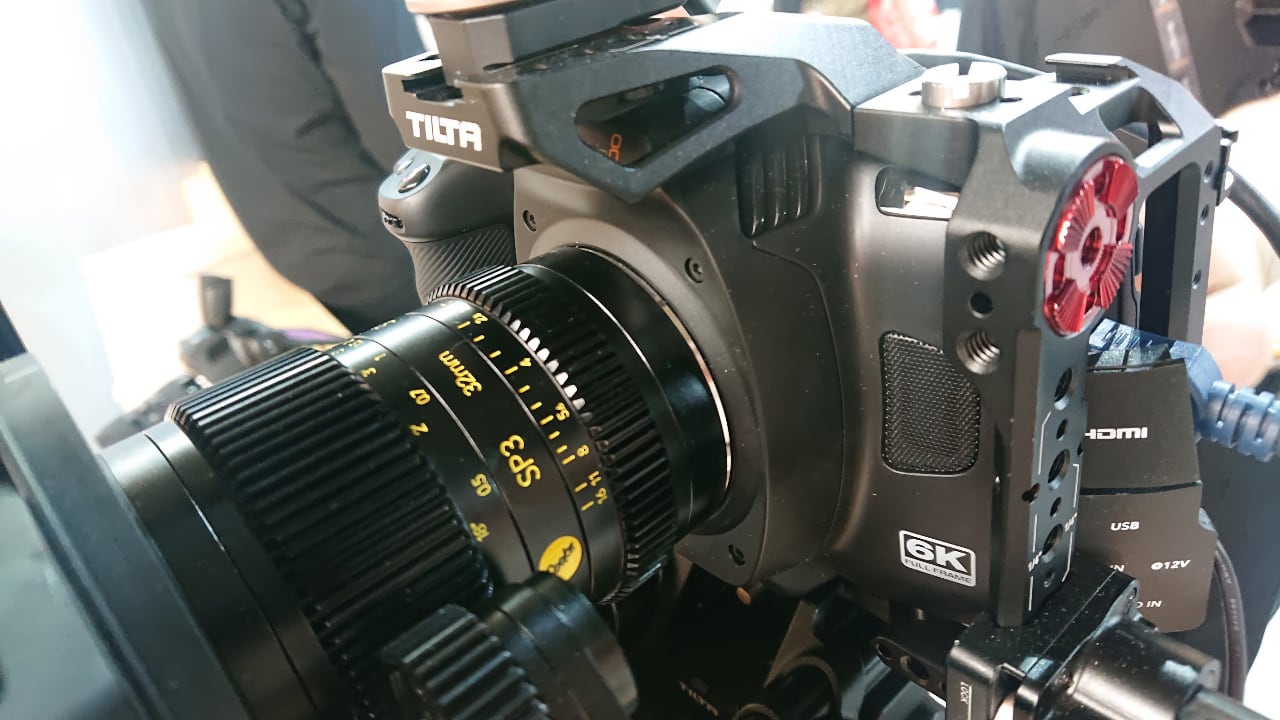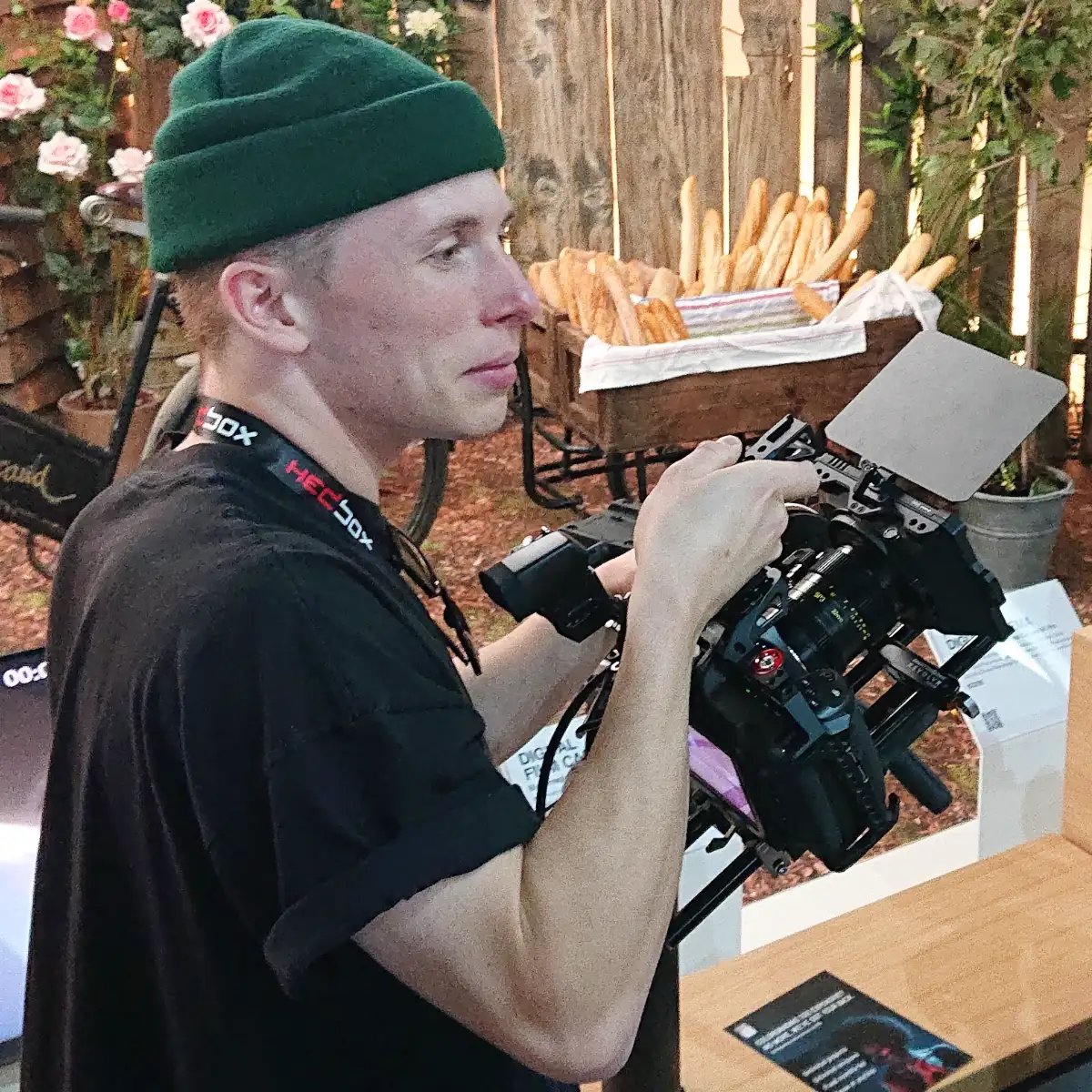
Phil Rhodes elbowed through excited show floor crowds to get a closer look at the Blackmagic Cinema Camera 6K. This is what he found.
It’s almost as if Cooke and Blackmagic have been conspiring to send frissons of excitement through indie moviemaking. A full-frame, shallow-mounted, comparatively affordable reincarnation of the Speed Panchro and a full-frame, shallow-mounted digital motion picture camera announced within a couple of weeks of each other? Nirvana, indeed, or at least close enough that Blackmagic appeared to be continuously exhibiting a large crowd of people in the camera section of its IBC2023 presence.
There has long been an argument that Blackmagic’s pocket-sized cameras aren’t pocket-sized and haven’t been since the earliest models. The new camera is simply titled Blackmagic Cinema Camera 6K, which could be seen as correcting an increasingly apparent mismatch between title and product. It could also be seen as a name that doesn’t fit the stills-camera styling particularly well. Either way, the base device is very close to the size and dimensions of the existing Pocket Cinema Camera 6K Pro; from any distance, they look more or less the same and presumably handle identically, at least overlooking the precision focus requirements.
My body is a cage

Anyone who’s used the preexisting cameras will already know whether the design seems right; it’s basically a chunky stills camera. The new model was shown at IBC in a Tilta cage, which might be seen as constituting something of an admission that it isn’t quite the right shape to begin with. However, it might also be a recognition of the fact that it might get quite badly smashed up on a trade show demo if it isn’t clamped firmly into something. Either way, we might reasonably wonder whether there’s likely to be a more crew-served version - an Ursa Mini Full Frame, perhaps - in the works, much as the 6K sensor made it from the Pocket to the Ursa. It’s a reasonable speculation, but that’s all it is.
The large, shallow mount is extremely welcome, well overdue in Blackmagic’s lineup, and the company’s newly-minted membership of the L-Mount alliance is eminently sensible. It should free the company from the need to rely on an imperfect reverse-engineering of Canon’s proprietary EF mount, which might improve the chances of better autofocus appearing on Blackmagic cameras. However, the range of L-Mount glass is naturally not as vast as was the case for EF, and the large size of the mount tends to mean actual L lenses are chunky. Achieving Canon levels of AF performance might also require a sensor with at least some pixels set up for phase detection, which is not something that Blackmagic’s current sensors boast, so we’ll have to wait and see.
In the immediate term, the purpose is clear: the L-Mount is short enough to enjoy all of the compatibility and performance advantages of short mounts in general, making the new camera compatible with a vast range of lenses. The only downside is that there isn’t enough room behind it for neutral-density filters. Crazier things have been done - recall the JVC GY-LS300, with its filters crammed in behind a micro four-thirds mount - although the large sensor would probably demand an impractically enormous filter wheel.
6K is everyday for a full-frame stills camera, equivalent to about 24 megapixels assuming a 3:2 sensor. The Ursa Broadcast G2 (perhaps more often thought of as effectively an Ursa Mini Pro 6K) is also a 6K camera, albeit with a smaller Super-35mm sensor. All things being equal - which they may not be - the bigger chip will have better performance. It’s impossible to tell when shouldering one’s way through a throng at a trade show, but it will be no surprise to discover that Blackmagic’s new camera is the quietest it’s ever released.
Drilling down
So, is the Blackmagic Cinema Camera 6K Full Frame the camera to end them all? Well, no, but that’s not due to any particular fault; it’s due to inevitable compromises of big chips. The practical issue is likely to be that pocket-style cameras are among the most likely to be found in situations where confident focus pulling is a distant dream. Blackmagic’s autofocus has not so far been good enough to save anyone from that situation. Furthermore, full-frame chips require big, expensive lenses, especially if we want cinema-style zooms. At the eBay level, the shallow mount makes things like the widely-respected Konica AR-mount stills primes practical, whereas EF mounts have previously denied them to Blackmagic users.
You could crop into the sensor and shoot with Super-35mm glass, which is sort of what makes it look like a camera for every situation, and there’s nothing wrong with that. Depending on exactly how large the 4K area ends up being and which lenses will cover it, that might end up being a very workable solution. It still won’t quite get you what the 6K Ursa Mini will get you, which is the option to shoot for a 4K finish on Super-35mm lenses, and yet still have some ability to frame wide and slide around for Fincher-style precision framing. That would probably require an 8K FF camera, but then we’re back into the diminishing returns of higher resolutions requiring smaller pixels and reduced sensitivity, noise floor or dynamic range.
What comes next?
Otherwise, the new 6K Full Frame camera behaves much like its pocket-branded predecessors. It’s pretty affordable, priced around the same level as some of the more advanced mirrorless stills cameras, which will do vaguely analogous things. However, generally, Blackmagic’s moviemaking features are more complete. Given the existence of the Alexa 35, the world seems to be aware that Super-35mm cameras absolutely need to keep existing, and ideally shallow mounts just such as L; the potential for an L-Mount, Super-35mm Ursa Mini 6K (or whatever they’d call it) is deeply, deeply enticing. Maybe we’re likely to see a full-frame Ursa Mini first.
We may discover that proper mount compatibility has allowed the company to massively improve its autofocus capabilities - it should - and that’ll be a huge boon. That’s something to find out on a bench test, which we’ll do as quickly as we can get our hands on one. We’ll also then find out if it really only shoots in Blackmagic RAW, as seems to be the case from what we can work out so far. In the meantime, for people who like the pocket cinema camera layout, this looks like a good way to get into big chips.
And to think this had to happen just as the prices on old, full-frame-compatible stills lenses had begun to return to sanity.
Tags: Production Cameras IBC2023


Comments